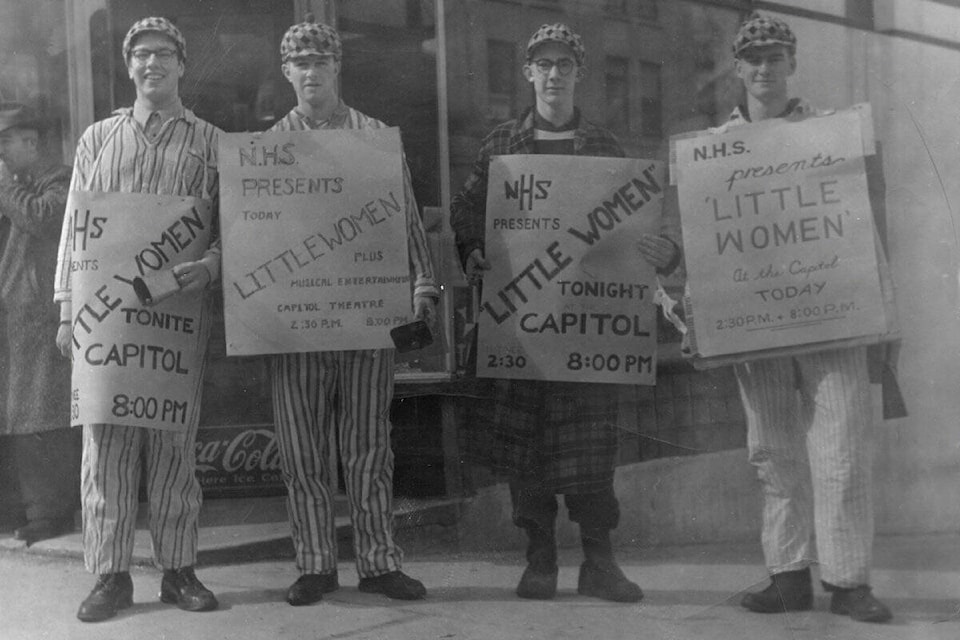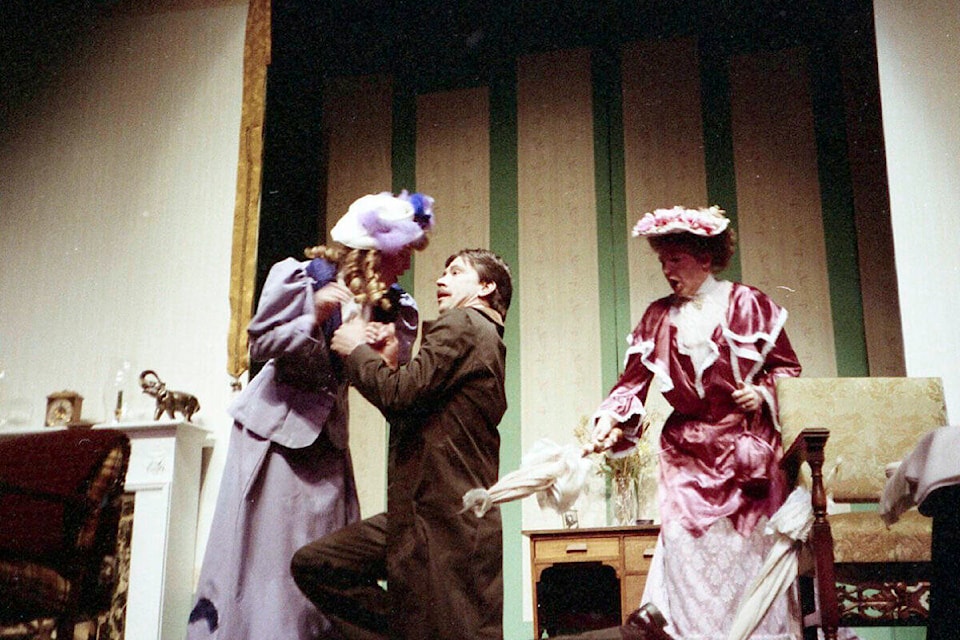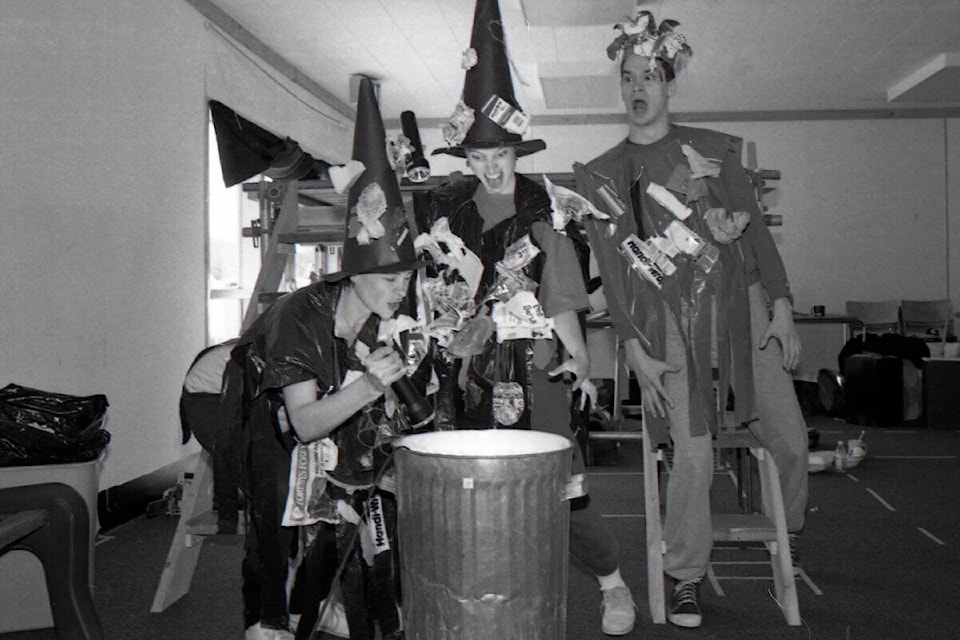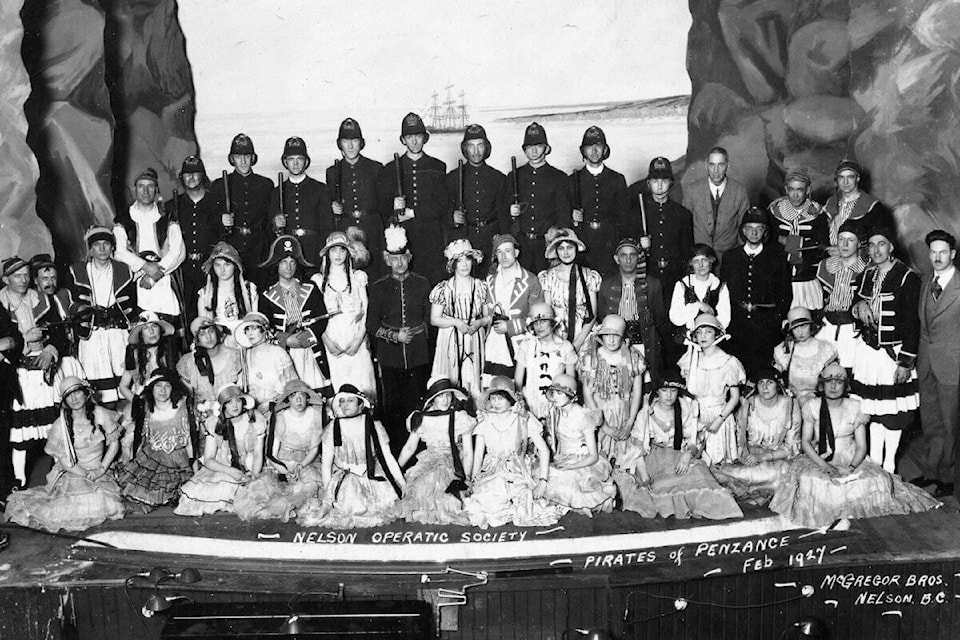by Tressa Ford
In spite of instabilities of venue, funding and societal change, there has always been a stubborn dedication to theatre in Nelson.
As a mining town, travelling entertainment groups performed in Nelson’s hotels, rinks and the old firehall. A proper venue finally came with the completion of the Nelson Opera House in 1898. Attitudes at this time were mixed – the relatively conservative population of Nelson’s middle and upper classes welcomed the opera house as a sign of Nelson’s sophistication and worldliness, but they were determined to also avoid theatre’s at-times unsavoury reputation.
With the opera house came the Nelson Operatic Society in 1899, the new city’s first performance arts group. Operatic society performances were paid for with ticket sales, so they often put on popular, seat-filling comic operas. The society dissolved about 1911 due to several members moving away but was revived in 1922 during the economic boom of the Roaring 20s. The Capitol Theatre opened in 1927 as a movie theatre, but its opulent interior hosted live events like vaudeville performances (comedic variety shows) as well.
During the Great Depression, when revenue from travelling shows dried out, the Opera House converted to an indoor golf course and wrestling venue, and the Nelson Operatic Society went inactive (they would briefly revive a couple years later). Despite the Depression, amateur theatre groups started up and forged on. The Nelson Little Theatre (NLT), the city’s longest-operating local performance group, began in 1932, joined by groups like the Nelson Shakespeare Club and the St. Paul’s Players.

After a brief return to hosting theatre, the opera house burned down in 1935. It was succeeded by the Civic Theatre a year later. Like the Capitol, the Civic was built for movies but was still used for live performance (though it lacked elements like dressing rooms).
With the onset of the Second World War, many theatre people served overseas. To adapt, the NLT produced radio plays and dramatic readings on CKLN, the local station. Service clubs like the Kinsmen and the Rotary Club also sponsored travelling performance groups in the Capitol.
The economic boom of the 1950s meant that groups like the NLT thrived, even as the Capitol Theatre building declined and fell into disuse. The Kootenay School of the Arts (formed 1958), the Notre Dame University (chartered in 1963), and the David Thompson University Centre (which succeeded Notre Dame in 1976) all helped train new theatre talent.
The influx of counter-culturalists in the 1960s and 70s also brought new life to the scene. Theatre Energy, one of the region’s most important and innovative performance groups, formed in 1976. Other initiatives included the Nelson Community Theatre, the Bogustowne Players, the Loose Change Theatre, the Light and Power Theatre Co. (part of the Theatre with the Disabled project), and the Living Room Theatre, which was run out of a Baker Street apartment.

Many of these groups were supported by government grants and able to put on more experimental performances. The Nelson Little Theatre balanced experimental plays with popular Agatha Christie productions.
Along with the Civic Theatre, venues included the Trafalgar Auditorium, L.V. Rogers’ Gerald Lee Hall, Studio 80 on Tenth Street, and local churches. Finally, after decades without a purpose-built home for the performing arts, the Capitol Theatre reopened triumphantly in 1988 after years of dedicated restoration efforts. This is also when beloved traditions like the summer theatre program and the Capitol’s Christmas Pantomime began.
Both the Nelson Little Theatre and Theatre Energy came to a close in 1993, but several other theatre initiatives have popped up since then, including the Nelson History Theatre, the Silverking Theatre, and Black Productions.
Theatre has continued to exist in Nelson due to the work of countless dedicated artists and volunteers. Our region has benefitted enormously from their work to provide this invaluable cultural service — not for profit but for the love of it.

Tressa Ford is assistant archivist at the Nelson Museum, Archives and Gallery. History Buff appears monthly.
